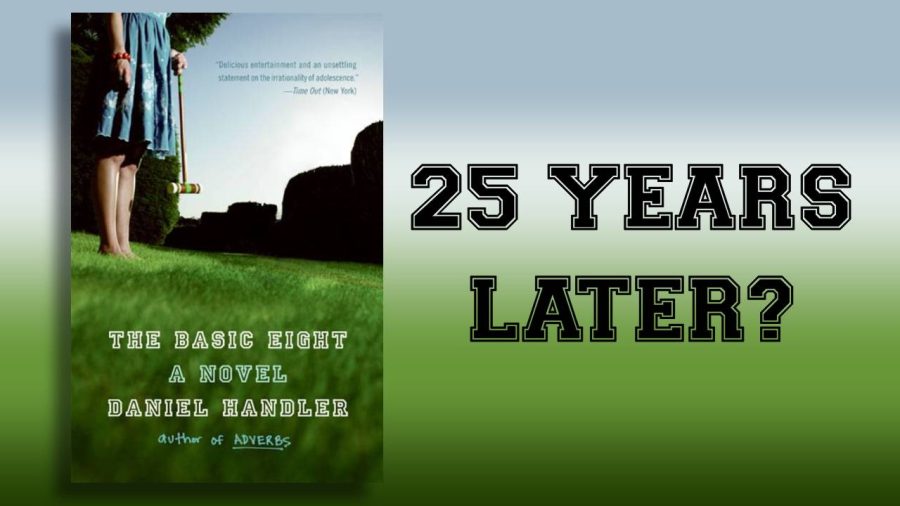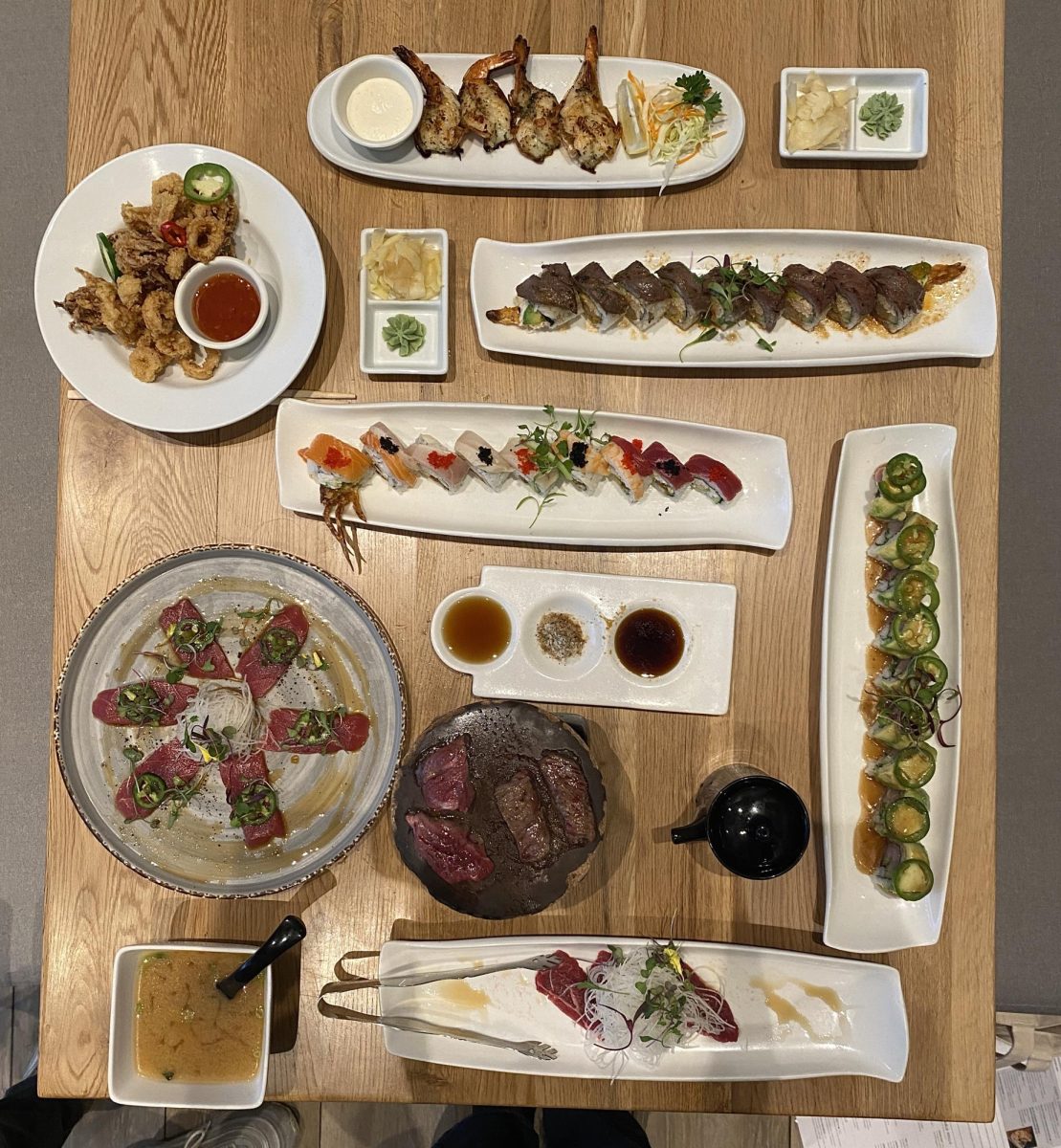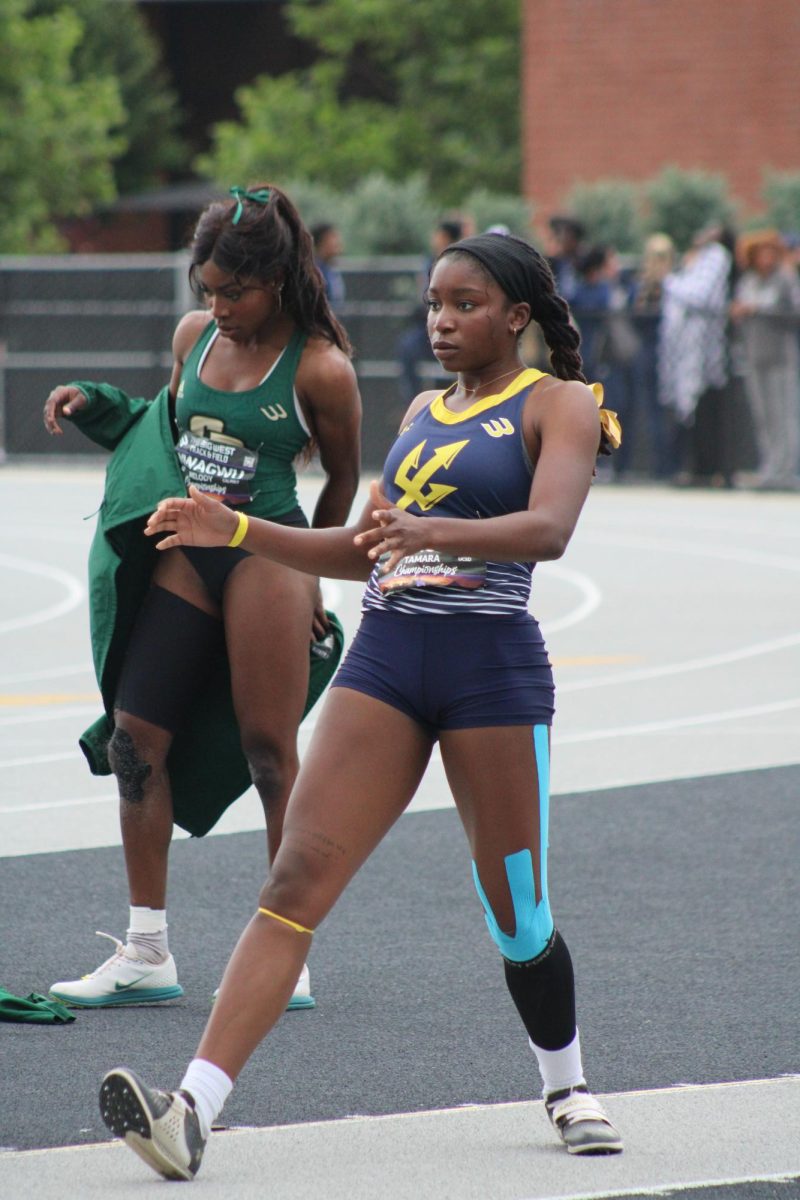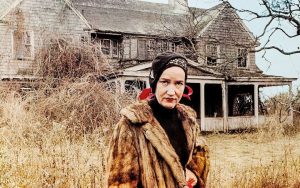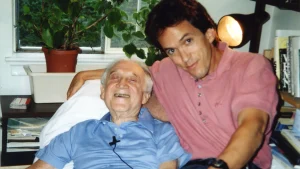25 Years Later, “The Basic Eight” Remains A Dark Academia Masterpiece
Daniel Handler’s debut novel about an accused murderer and her glamorous friend group remains a funny, sharp satire perfectly suited for fans of the Dark Academia genre.
May 7, 2023
Content Warning: This novel contains themes of sexual assault.
The year is 1998. Satanic Panic is reaching a fever pitch. TV psychologists interview accused killers, while news anchors narrate the intricate rituals of supposed cults over B-roll footage of candle circles and spray-painted pentagrams. Supposedly devil-driven crimes are psychoanalyzed, dramatized, parodied, misconstrued, and used to stoke fear in viewers. Victims and perpetrators are made into case studies of what not to do, how to protect your children, and who to be suspicious of — and no one is more suspicious than teenagers.
This paranoid, frenetic society is the background — and the punching bag — of Daniel Handler’s debut novel, “The Basic Eight.” The book takes the form of the edited diary of Flannery Culp, who wants to correct public opinion about the murder that skyrocketed her and her seven friends to infamy on the parodic “Winnie Moprah” show. Twenty-five years after its publication, “The Basic Eight” remains a darkly funny, sharp critique of Satanic Panic, wrapped in an over-the-top portrayal of high school angst.
The countdown to the murder gives the book momentum, but the compelling characters and their interactions are what really make it a good read. Handler’s book invites the reader into Flannery’s exclusive, tight-knit group of glamorous friends, known as the titular Basic Eight. Their experience at Roewer High School might be the usual drudgery, but the Basic Eight manage to make their lives feel special. Flannery and co. have witty inside jokes, special opera-and-pastries breakfasts, elaborate dinner parties, adventures with absinthe, favoritism from their eccentric teachers, and many messy relationships. One of the group members is always referred to by her beautiful full name: Jennifer Rose Milton. The other, Flannery’s ex-boyfriend Douglas, wears a suit and pocket watch to school. V—, full name redacted, dons real pearls. The most glamorous and enigmatic character is Natasha, Flannery’s gorgeous, carefree best friend who serves as the cool-girl antidote to the novel’s neurotic narration.
If they sound like the most pretentious friend group possible, it’s because they are. Flannery jokingly acknowledges it herself at one of their dinner parties. The Basic Eight are caricatures of what every beret-wearing, chain-smoking teenage poet imagines themselves to be. Their seemingly enviable lives quickly become a car crash you can’t look away from. Like other novels in the Dark Academia genre, “The Basic Eight” exposes the dingy sheen beneath the intellectual airs put on by its in-group. They’re not a satanic cult, as armchair experts on television diagnose them, but they aren’t angels either. They’re hormone-addled teenagers. They might dine on baked brie and throw a wild cast party, but they’re also petty, insecure, occasionally prejudiced, and often cruel to one another — all before murder is thrown into the mix.
Alongside the delicious drama and interesting characters, Flannery’s narration is another one of the novel’s high points. Her voice drips with sarcasm and self-loathing as she bites back at the ‘concerned’ adults who have labeled her a sociopathic murderess. At times, her bitterness can feel overbearing, but Flannery is ultimately portrayed as a nuanced antihero. Her diary entries don’t flinch from recounting the scary, pathetic, and ugly moments of her life — from being stood up by her crush Adam State and constantly worrying about her weight to dealing with a traumatic sexual assault at the hands of a teacher and facing an incompetent, uncaring administration. Handler does a great job humanizing Flannery and even endearing her to the reader, alleged murder aside. The novel’s unpredictable but well-foreshadowed plot twist is the cherry on top of her character arc. By the end, you’ll want to flip back to the start and re-read it all over again, viewing the Basic Eight in a whole new light.
If you’re a fan of Laurie Halse Anderson’s “Speak” or Donna Tartt’s “The Secret History,” you’ll want to add “The Basic Eight” to your reading list. It’s a slow burn for a book about a murder — clocking in at nearly 400 pages — but the engaging characters and frequent humor make the story fly by. “The Basic Eight” checks all the boxes of a great Dark Academia story: an exclusive friend group, pretentious parties, over-involved teachers, startling violence, soured relationships, and an unexpected twist. The novel’s satire of Satanic Panic is somewhat dated, but swap the reality-TV doctors for true-crime podcasters and Reddit detectives and it’s easy to imagine how the Basic Eight would still be demonized today. Besides, the heart of the story — an incredibly horrible high school experience spurred on by an unrequited crush — is as timeless as Flannery’s funny narration. Just be sure to put aside a few hours before you dive into this book. Like the TV psychologists who deconstruct Flannery and her friends, you won’t be able to stop yourself from parsing every detail of the alluring group and their shocking crime.
Image Courtesy of Kobo.com


